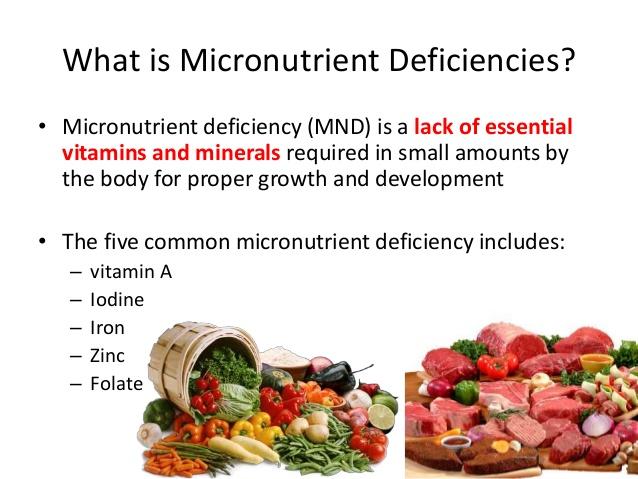Governance
Fortifying rice by adding micronutrients
is a quick and cost-efficient way to address malnutrition
·
In an formidable try and combat the
serious problem of anaemia because of malnutrition, Prime Minister Narendra
Modi made an announcement to mandate rice fortification in all social safetynet
schemes by 2024.
·
Rice fortification, a technique of
adding micronutrients like iron, folic acid and vitamin B12, is an powerful,
preventive and value-green complementary method to deal with the nutrition
trouble within ashort period.
·
Anaemia – India has made impressive
progress in reducing stunting and anaemia among children over the last decade.
·
However, anaemia still influences a
couple of in two children and ladies.
·
The WHO has declared anaemia among women
and children as a “severe” public health problem, demanding immediate
attention.
·
Further, recent statistics indicate rise in
anaemia levels amongst among women and children in 16 and 18 of 22 States/UTs
respectively (NFHS-5).
·
Iron deficiency-anaemia is the biggest
cause of disability for the past 10 years and contributed 20 per cent direct
and 50 per cent associated maternal deaths in India.
·
Its economic burden is equivalent to
about 4 per cent of GDP.
·
Apart from iron, deficiency in
micronutrient like diet B12, nutrition A, folate and zinc also make a
contribution to growing anaemia degrees.
·
Reasons– The available national level
consumption data National Nutrition Monitoring Board (1979; 1991; 2002; 2012)
indicate low levels of iron and micronutrient deficiencies amongst the Indian
population. “What India Eats”, a recent report via ICMR-National Institute of
Nutrition, suggests low intake of nutritious food like end result, veggies,
milk, pulses, meat, poultry, and so on.
·
FAO lately attributed the affordability
of cost-in-depth healthy diets as a constraint in attaining the
nutrients-associated Sustainable Development Goals globally.
·
At $1/person per day, India’s spending
on diet is significantly lower than the EAT Lancet dietary recommendations of
$3-5.
·
Analysis by means of IFPRI also finds
that almost two-thirds of the rural negative cant manage to pay for a
nutritious food regimen that meets India’s country-wide meals-based totally
nutritional pointers.
·
On the other hand, rice, a staple
cereal, is fed on by way of 65 in step with cent of the population at the fee
of 6.8 kg in keeping with capita per month.
·
Fortifying rice with micronutrients as a
consequence is an excellent vehicle and gives an immediate opportunity to
bridge nutritional nutrient gaps and enhance fitness outcomes.
·
Indian
Efforts – The Prime Minister’s announcement of
universalization of rice fortification by 2024, will cover about 100 crore
target population, including about 20 crore women of reproductive age.
·
FSSAI is working on FRK standardisation
and enabling setting up more NABL accredited labs and Bureau of Indian
Standards Standardisation of Extruders/Blenders, to ensure quality.
·
FCI and the Ministries of Women and
Child Development and Education are working in convergence to ensure
distribution of 13.70 lakh tonnes of fortified rice in ICDS and MDM.
·
It has been promoting millets on a
venture mode to obtain dietary protection and has blanketed millets underneath
NFSA to be dispensed in the social protection net schemes.
·
The Prime Minister recently launched 35
crop sorts with higher nutrient content to fight malnutrition.
·
Under POSHAN 2.Zero, MoWCD has entreated
all Aspirational Districts to set up poshanvatika or nutrigarden to promote
regionally grown nutritious meals.
·
Note
–
Historically, India has tested the idea of fortification by mandating iodised
salt in 1962.
·
Interestingly, CNNS Report 2016-18,
subtly hinted the achievement of established fortification of salt through
revealing iodine to be the handiest exception to micronutrient deficiencies in
the examined pattern.
·
To recognize more about Rice
Fortification, please refer to August 2021 DPN.
·
Copenhagen Consensus Copenhagen
Consensus is a project that seeks to establish priorities for advancing
international welfare using methodologies primarily based at the concept of
welfare economics, using cost–gain analysis.
·
It turned into conceived and organized
around 2004 by means of BjørnLomborg,the author of The Skeptical Environmentalist
and the then director of the Danish government’s Environmental Assessment
Institute.
·
The project is run by the Copenhagen
Consensus Center, which is directed by Lomborg and was part of the Copenhagen
Business School, but it is now an independent non-profit organisation
registered in the USA.
·
The undertaking considers feasible
solutions to an extensive range of troubles, provided with the aid of
professionals in every area.


Comments